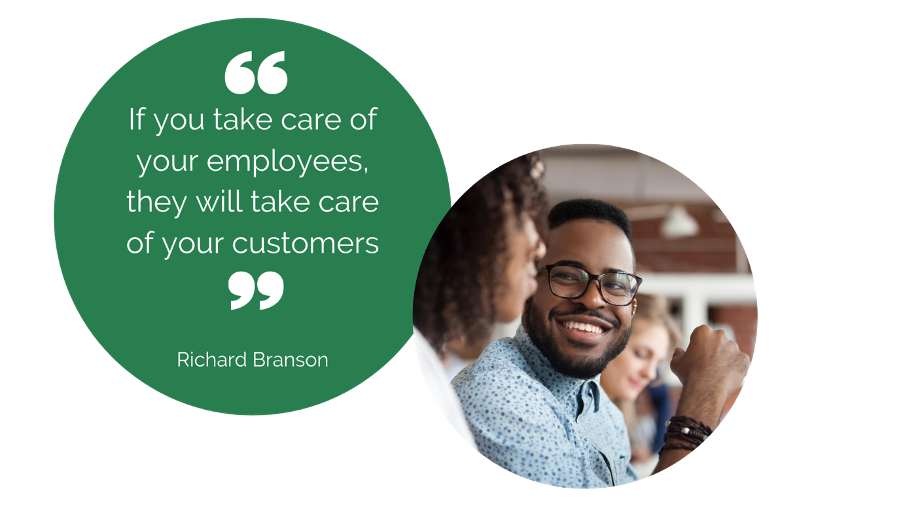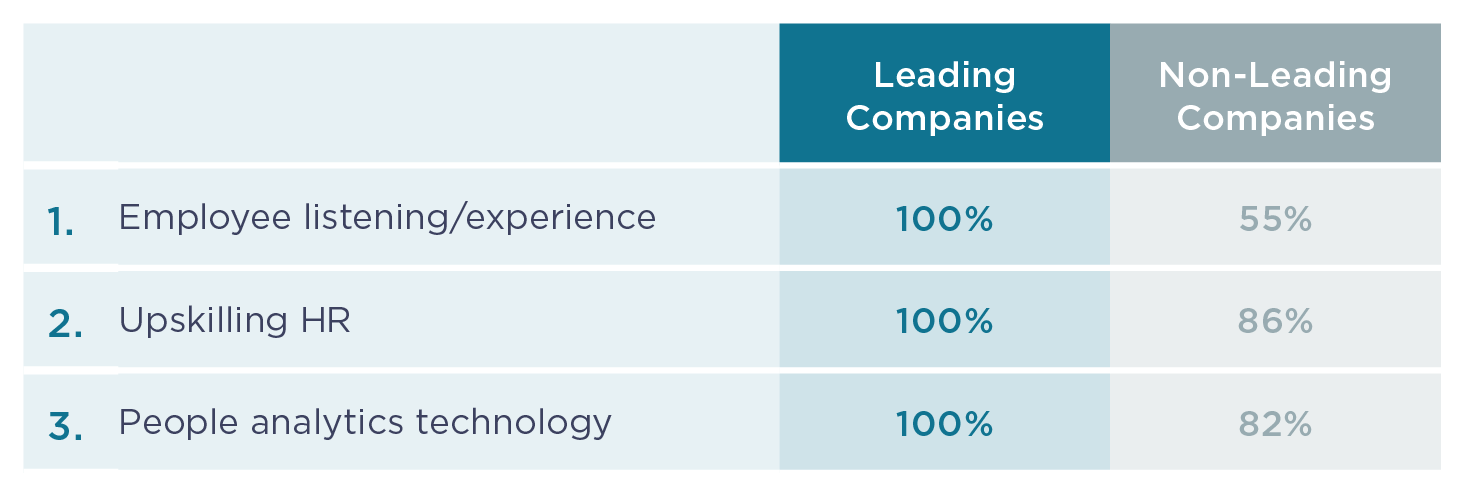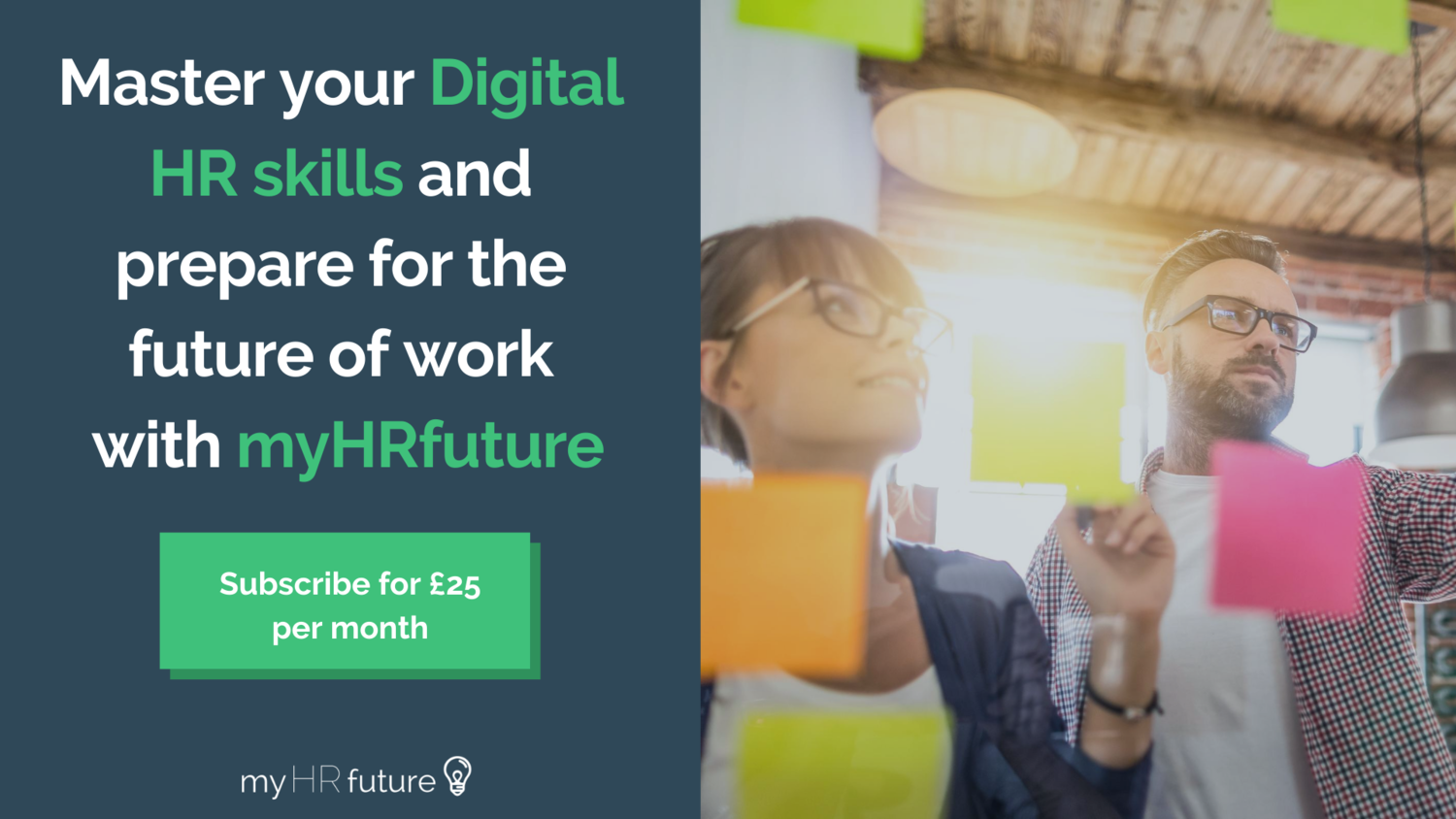Why Should HR and the Business Share the Same Definition of Employee Experience?
Taking an Employee-Centric Approach to the Experience of Work
Employee Experience (or EX as it is known), continues to generate a lot of noise with organisations arguably putting increased focus on EX in the wake of COVID-19. Businesses know that people are one of their main assets, however meeting people’s expectations for the experiences they have at work is increasingly difficult. A move towards a more employee-centric approach to the experience of work requires a change in mindset across the enterprise.
Yet only some organisations get employee experience right, while others struggle. There are a various reasons why, one being that HR and businesses need to manage their responsibilities and come together with the same definition of employee experience.
We have seen dramatic shifts in the wider macro-economic environment in recent history, and these have created fundamental changes in the way that individuals relate not just to each other, but also to organisations.
The Four Stages of Economic Value
What is the Experience Economy?
We now live in the experience economy. The experience economy was first described in 1998 by Joseph Pine and James Gilmore. Pine & Gilmore argued that businesses must orchestrate memorable events for their customers and that memory, itself becomes the product: the "experience."
Today, experiences are the basis of increasing competition for businesses and organisations. People of all generations are placing more value on experiences and relationships over things. Millennials, the largest generation in the workforce currently, are leading the charge in placing this newfound value on experiences. They are spending more money and time with businesses and joining organisations based on the quality of the experiences offered.
Customer Experience (CX) – the art of organisations delivering great experiences to customers in the new economy - roots back to the 1950s when W.E. Deming developed the principles of what became known as Total Quality Management (TQM). CX as we know it took off in the late 1990s and early 2000s as personalisation – enabled by customer data - became a key component and CX became measurable using the Net Promotor Score (NPS), which was created in 2003 by Fred Reichheld, Bain & Company, and Satmetrix Systems.
Historically, progressive CEOs tasked the marketing, sales and services teams to manage CX in their organisations, to which - it is fair to say - they have successfully risen to the challenge. Employee Experience (EX) emerged about a decade on from the rise of CX in the 2010s. Now, organisations are looking to replicate that same CX success with their EX and often the HR function is tasked to own it.
However, the problem arises with the sheer scope of EX. Employee experience is defined as the ‘sum of all experiences of managers, employees, candidates, alumni and freelancers with a company’. From the point of view of an organisation it’s the ability to meet the needs of individuals, and connect with their reason and emotion across all interactions over time. This goes far beyond the responsibility of HR alone.
Interested in learning more about Employee Experience? Take a look at our online Employee Experience certifications on myHRfuture
What is HR's Role in Employee Experience?
HR professionals know that when employees have a pleasant and rewarding job experience with their employer, they are happier employees and more productive. This means they are more engaged, which benefits companies in many ways. Employees who are more engaged attend work regularly and accomplish more tasks, which in some cases can result in a decrease in absenteeism by 81% and an increase in productivity by 14%.
This is achieved, in part, by what HR does on the frontline, as they are typically the first contact when employee issues arise, they play a significant role in employee experience in multiple ways. They do this by first practising employee listening. Employee listening is a strategic tactic for learning what employees value with their employment. With employee listening, HR professionals can be given innovative ideas for solving problems by those who are first-hand experiencing it. Additionally, employee listening provides HR professionals insight into the workforce's daily challenges.
To effectively use employee listening, HR wants to understand all the elements that go into it, including the why, the what, and the how of employee listening. Then, they will want to build an effective employee listening strategy that encompasses the four channels:
Employee Surveys
Internal Social Channels
Focus Groups
Not only does employee listening give HR professionals insight into ways to improve EX, but it also gives them data to analyse HR's next responsibility with the employee experience. From the collected information, HR can determine the root causes of a problem and develop solutions. From there, they can develop hypotheses and plans to address concerns.
This is done by understanding how to connect people analytics with the employee experience. Collecting the correct data the right way, by prioritising projects to maximise the employee experience, and by measuring the business impact of improved EX can develop productive results.
But, all this work and effort will only be worthwhile with the drive to make the change happen. HR professionals need to be the champions of change. They need a clear plan for building a great employee experience and be able to communicate the changes to all stakeholders, adapt them, and make them common practice within the organisation.
Following in CX’s footsteps: enter EX
Employee Experience (EX) emerged about a decade on from the rise of CX in the 2010s. Now, organisations are looking to replicate that same CX success with their EX and often the HR function is tasked to own it.
What Responsibilities Do Businesses Have with EX?
Businesses need to make the connections between employee experiences and business results. As we saw with our Insight222 People Analytics Trends research report in 2022, one key factor that many Leading Companies have is their 100% dedication to employee experience vs. the 55% of non-leading companies. This comes from the determination and understanding of the impact it has on business performance.
To create connections between employee experience and tangible results, businesses should first respect the employee and view them as important as their customers. What employees say and share needs to be valued and respected. Psychological safety needs to be encouraged so more employees speak up. And diversity and inclusion need to truly be a part of the company culture to drive innovations.
Since employee experience encompasses more than just their interaction with the HR department, a business must acknowledge its part. Manager and colleague interactions, resources and equipment, and company culture all play a role in an employee's day-to-day, and if it is challenging, it can have a negative impact on EX.
Businesses must support people analytics efforts by understanding the maturity model of EX and assisting with measuring the four expectations of the employee experience, which include:
The need for productivity and agility
The need for fast and local improvements
The need to change leadership behaviour
The need for a sense of belonging
That's why too, leading companies are investing more in people analytics. By connecting employee experience to business performance, they can see what works and how it benefits the company.
We know the majority of experiences happen through ‘everyday’ work, and are influenced by a variety of factors such as social, e.g. colleagues or managers; physical and digital, e.g. company intranets or office equipment; or even external to the organisation altogether, e.g. the job market, or former colleagues.
Given that these factors that influence EX cut across the whole organisation, and are owned and controlled by a wide range of different stakeholders, it is imperative that the business be involved. Ultimately, EX is a business affair.
Why HR and and the Business Needs to Come Together for Improved EX
It is a wise strategy to have HR and the business share the same definition of employee experience. Consider any team whose members have different definitions of winning the game. One player may be kicking the ball to the goal while another is running in the opposite direction.
When HR and the business have different definitions of employee experience, it can lead to misunderstandings on what is considered a positive or negative employee experience and how to improve it. This can also lead to a lack of clarity and alignment on what to prioritise and measure.
Having a shared definition of employee experience allows HR and the business to work together to identify and improve the overall employee experience. It ensures that they are aligned on what they are measuring and what they consider essential. It helps to ensure that HR and business objectives are aligned and that both parties clearly understand what is important to employees and how to improve their experience. A shared definition also facilitates the identification of key drivers of employee experience, which allows for targeted interventions and resource allocation.
Additionally, a shared definition of employee experience enables HR and the business to communicate better and measure the impact of their initiatives on employee experience. This can demonstrate the value of HR and people initiatives to the business and provide a clear link between employee experience and business performance. By working with a shared definition of employee experience, HR and the business can improve the overall employee experience and drive better business results.
What Skills Does HR Need to Create Synergy Within the Business?
To make collaboration with the business easier, HR professionals want to tap into their current skills or develop them if they are lacking. We found three core skills that help HR professionals succeed in every part of their job, including improving employee experience.
HR needs to be business focused – so they can work together with business leaders to improve EX to grow the company.
HR needs to be data-driven – so they have accurate information to make strategic decisions that will generate positive results for the company.
HR needs to be experience-led – so what they invest is easy to use and benefits all stakeholders.
We have discovered from our Insight222 People Analytics Trends research that leading companies are investing in their stakeholders and teams, measuring the financial impact of people analytics solutions, and scaling people analytics across the enterprise. So, having the right skills will put any CHRO, HRBP, or HR professional in the right position to join businesses in improving employee experience.
Changing Mindsets
To start having more productive conversations with the wide range of stakeholders necessary for the effective management of Employee Experience, it is vital to get on the same page about the definition, scope and scale of EX within your organisation. In this downloadable infographic we’ve outlined the key points of EX, why it is important, and how you can visualise the complexity of EX in an Employee Experience Ecosystem. It’s a great asset for you to leverage to help support you with your stakeholder conversations.
NEW skills, NEW opportunities, a NEW future…
The myHRfuture academy is a learning experience platform for HR professionals looking to invest in their careers. We have many online HR certifications that are designed for People Analytics professionals and HR Business Partners to help them build their knowledge and get a People Analytics certification or a certification in Digital HR and understand how to become more digital and data-driven. All of our online HR certifications reflect the core HR skills you need to develop for the future, giving you a professional edge while providing evidence of the skills you’ve mastered, helping you get ahead and press PLAY on your career for only £25 per month.
ABOUT THE AUTHOR
Caroline is the Research Director at Insight222. She is a thought-leader, researcher and writer on people analytics and the future of HR. Prior to joining Insight222, she worked at the Center for the Future of Work where she was an advisor and in-demand speaker on topics related to the future of work. She has also held roles in digital services and transformation consulting at Cognizant. Contact Caroline at caroline.styr@insight222.com









